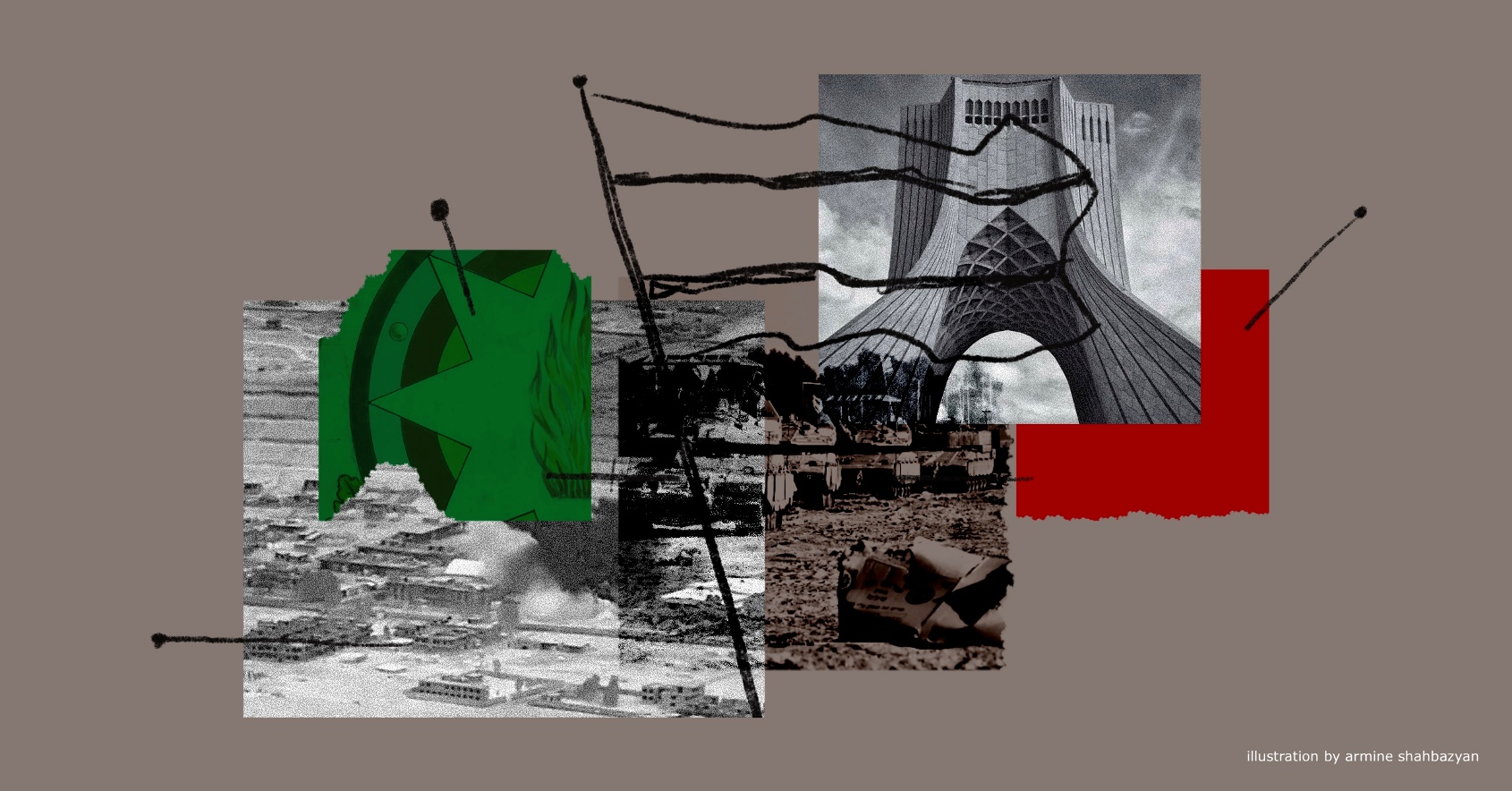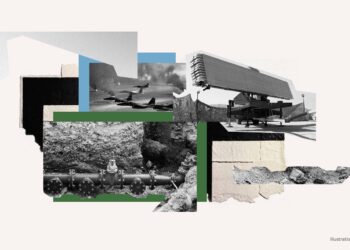
Listen to the article.
The Middle East stands at the crossroads of a potential clash between regional powers. Major actors such as Iran, through its Axis of Resistance, and Israel, supported by the United States, remain actively entangled in hostilities. For Iran, the current situation has become critical to ensure the maintenance of its military, political, and diplomatic influence. In recent months, the fragile balance of power began to shift with the Reformist faction returning to power through the election of Masoud Pezeshkian. This political competition between Principalists and Reformists may signal upcoming domestic destabilization.
The Iranian political system is a unique attempt at harmoniously combining theocratic rule and republicanism into a single structure. This unique political system was established after the 1979 Islamic Revolution, which instituted clerical dominance over republican institutions and abolished the monarchy. In this new system, the Supreme Leader—currently Ayatollah Ali Khamenei—wields ultimate authority and almost absolute say in all matters related to governance, military, judiciary, and media. Under the authority of the Supreme Leader are the Guardian Council and the Expediency Council. These bodies hold the absolute power to veto legislation passed by the elected parliament and, if deemed necessary, disqualify candidates for elected office, even at the presidential level.
In Iranian politics, Principalists represent the conservative faction, strictly adhering to Islamic values and sometimes radicalizing these ideals. Reformists, conversely, adopt a moderate approach, encouraging engagement with the West, and advocating for looser social restrictions. These factions clash over elected positions within the system, though the elected President and Parliament wield limited political influence on domestic and foreign politics, as well as over the Supreme Leader and his appointees. While Principalists and Reformists compete for influence in elected positions, they struggle to challenge the dominance of appointed institutions. Principalists enjoy institutional advantages due to the support of the Supreme Leader. Nevertheless, both groups remain committed to preserving the values of the 1979 Islamic Revolution.
Ayatollah Ali Khamenei, Iran’s Supreme Leader since 1989, faces a dire succession crisis in domestic politics. Ibrahim Raisi’s presidency appeased the Principalists, who saw him not just as President but as a potential successor to the Supreme Leader. In contrast, Masoud Pezeshkian’s presidency marks a shift in the established balance in Iranian politics.
The Reformists’ electoral success reflects apparent popular discontent with conservative figures and concern over the continued influence of Principalists over government institutions. Pezeshkian’s rise came at a time when the Principalists had consolidated power across all levels of government, using the authority of the Guardian Council to hinder Reformist candidates. Masoud Pezeshkian’s presidency signals a shift—albeit partial—in Iranian politics towards moderation, both domestically and internationally. The West can anticipate a more flexible Iran to come forth, addressing long-standing foreign and domestic policy issues.
President Pezeshkian’s influence will be needed in foreign policy as Iran navigates the complex situations facing its Axis of Resistance. This alliance comprises Hezbollah in Lebanon, the Houthi movement in Yemen, Hamas in Palestine, Shi’ite militias in Iraq, and the Syrian government in a partial manner. As a key pillar of Iran’s foreign policy, the Axis of Resistance serves as Iran’s gateway into other Middle Eastern states, expanding its influence and opposing the United States and Israel. More than just a military grouping, this alliance is a political one that aims to build and maintain ties with local entities sympathetic to Iran, united by a shared opposition to the West. Ideologically it revolves around the conception of a “Shiite Crescent.” This ideology revolves around creating a fertile ground for the development of the influence of Iran echoing its imperial history, the revival of Shia Islamism as a political religion according to the teachings of Ayatollah Ruhollah Khomeini, and an anti-imperialist struggle not only against the West, but also the Sunni world, especially Saudi Arabia, investing upon present grievances towards the ruling elite in these countries. According to reports and official statements, the Axis of Resistance is spearheaded by the IRGC Quds Force, which is under the control of the Supreme Leader of Iran, Ayatollah Ali Khamenei.
In this context, Hezbollah in Lebanon exemplifies how an entirely Iranian-built proxy operates. Its close ties with the Iranian Revolutionary Guard Corps and strict adherence to the “Wilayat al-Faqih” (“Guardianship of the Jurist”) demonstrate loyalty to Iran’s Supreme Leader, Ayatollah Ali Khamenei. Hezbollah remains the strongest Iranian proxy in the region and, according to some sources, the most powerful non-state actor in the world. As such, the international community has been critical of Hezbollah as have Lebanese citizens who view Hezbollah as a threat to Lebanon’s sovereignty, as it has become involved in numerous regional conflicts in Syria, Iraq, Yemen, and Palestine.
Internecine violence between Hezbollah and Israel for the past year escalated in September 2024 following the pager explosions in Lebanon. These explosions, targeting Hezbollah militants, have been attributed to Israel. Ongoing border clashes and airstrikes by Israel have further exacerbated the situation, resulting in over one million Lebanese being internally displaced.
Despite these developments, many observers note Iran’s surprisingly pragmatic stance, even after the assassination of Hassan Nasrallah, Hezbollah’s longtime Secretary-General. Nasrallah was a pivotal figure within the organization and a staunch loyalist of Supreme Leader Ali Khamenei, who called him a brother. Nasrallah’s assassination marks a seismic event for Lebanese and regional politics, given his influential role over the past 32 years. Lebanese leaders have expressed their confusion about what a post-Nasrallah world looks like.
Iran’s response to the assassination of its elite militants, state employees, or loyalist proxies has become a matter of debate. The recent Iranian attack on Israel resulted in extremely minimal losses for Israel and the death of a Palestinian, due to the effectiveness of Israeli and U.S. air defense systems. Tehran’s insistence on considering this limited attack as retaliation for the assassinations of Nasrallah, Hamas’s political leader Ismael Haniyeh, and IRGC Brigadier General Abbas Nilforoushan, has been described as inadequate, given the significance of these individuals and the strong statements made by Iranian officials. This behavior demonstrates Tehran’s restraint and pragmatism. However, Iran must be careful not to alienate its Shia support base in Lebanon, particularly regarding their loyalty to Iran. Recently, Hezbollah loyalists and their political allies have expressed growing concern about how Iran will maintain its commitments to Hezbollah as a potential Israeli blockade looms probable after its targeting of the main border crossing between Lebanon and Syria, which may affect weapon supply chains.
Opposition figures in Lebanon have quickly taken advantage of the situation, claiming that Iran has abandoned Hezbollah in Lebanon, potentially turning it into “another Gaza” due to Israeli aggression. On the other hand, loyalist Druze leader Wiam Wahhab, in a televised interview, reaffirmed his loyalty to Hezbollah’s resistance against Israel. However, he lamented how Iran’s limited support for Hezbollah and Lebanon’s Shia community pales in comparison to Tehran’s aid during the 2006 July War. Wahhab also alleged that Iranian reformists, led by President Pezeshkian, have betrayed Hezbollah for pragmatic gains and reconciliation with the West—namely the United States—by coordinating their attack on Israel with Washington.
Israeli Prime Minister Benjamin Netanyahu has expressed willingness to replicate what Tel Aviv orchestrated in Gaza once again in southern Lebanon, calling for the Lebanese people to liberate themselves and overthrow Hezbollah. Observers view Israel’s stance as a determination to end the military wing of Hezbollah. Israel intends to achieve strategic gains it partially failed to accomplish during the 2006 July War like the implementation of UN SC Resolution 1701, ensuring the permanent disarmament of Hezbollah under international oversight.
In this context, Hezbollah, having lost a significant portion of its senior leadership, appears disoriented while holding ground on the southern border against minimal Israeli attempts to enter Lebanon. Israel also consistently threatens Iran with retaliation, though this response may be similar to Iran’s initial strike. U.S. President Joe Biden has repeatedly stated that Washington supports a response against Iran, provided Israel does not target Iranian nuclear sites and maintains a “proportional” response.
However, Lebanon lacks a President and has a deadlocked parliament, alongside a caretaker government, which claims it will fully implement UN SC Resolution 1701. This resolution, passed on August 11, 2006, called for Hezbollah’s disarmament—a goal that remains unachieved. There is little confidence domestically and internationally in the Lebanese government’s capacity to implement this objective, given the strength of Hezbollah. As such, Lebanon will seek guidance and support from the international community to respond to current crises, as it has historically done. However, Hezbollah’s disarmament remains a contentious and extremely challenging issue. Such action would be costly for Iran, which has invested millions over decades to arm and strengthen Hezbollah. While the budget of Hezbollah is opaque, it has been stated that the annual budget accounts for more than $100 million.
Changes to the political dynamics of regional powers affect neighboring countries. Iran, while focused on the Middle East, also faces shifts on its northern borders as Armenia and Azerbaijan discuss a potential peace agreement. Iran has consistently opposed any border changes in the Caucasus, particularly the “Zangezur Corridor” demanded by Azerbaijan, Russia, and Turkey. For example, Foreign Minister Seyed Abbas Araghchi, in response to Russian support for the “Zangezur Corridor” stated that the preservation of the territorial integrity of its neighbors is a matter of national security for Iran, and any new border redrawing would be “unacceptable and a red line for Iran.”
Yerevan can leverage Iran’s stance during negotiations concerning regional unblocking to defend its sovereignty and interests. However, as the Israeli-Azerbaijani alliance persists since the 2020 Nagorno-Karabakh War, it is likely that Iran perceives Azerbaijan as a threat to its security due to the heightened tensions with Tel Aviv. This alliance is likely to remain strong as Azerbaijan seeks to achieve gains from the peace process with Armenia.
Iran stands domestically and diplomatically at a critical point as it balances moderation with prior commitments and loyalty to its proxies. Tehran must maintain equilibrium on domestic, regional, and international fronts. The looming succession of Ayatollah Ali Khamenei, the ongoing Principalist-Reformist rivalry, and the rise of moderation in Iran may reshape perceptions of the country. In this context, Lebanon and Israel play a significant role with far-reaching regional consequences. The Middle East, the Caucasus, and Western Asia might experience geopolitical changes sooner than anticipated.
Also see
Iran Challenges Russia’s Stance on the “Zangezur Corridor”
Remarks made by Russia’s Foreign Minister Sergei Lavrov in Baku on August 19 triggered a wave of strong reactions from Iran, underscoring the conflicting views Moscow and Tehran hold on a key regional issue.
Read moreAzerbaijan-Israel Relations: Implications for Armenia
The deepening alliance between Azerbaijan and Israel carries significant implications for Armenia, notably Azerbaijan's considerable acquisition of advanced Israeli weaponry which it has extensively employed against Armenian forces in the past decade.
Read moreIran’s Experimental Policies in the South Caucasus
Relations between Azerbaijan and Iran deteriorated following the 2020 Artsakh War. Did the visit of Iran’s Foreign Minister to Baku in July 2023 succeed in resolving existing differences? Or should ongoing tensions between Baku and Tehran be anticipated?
Read more






